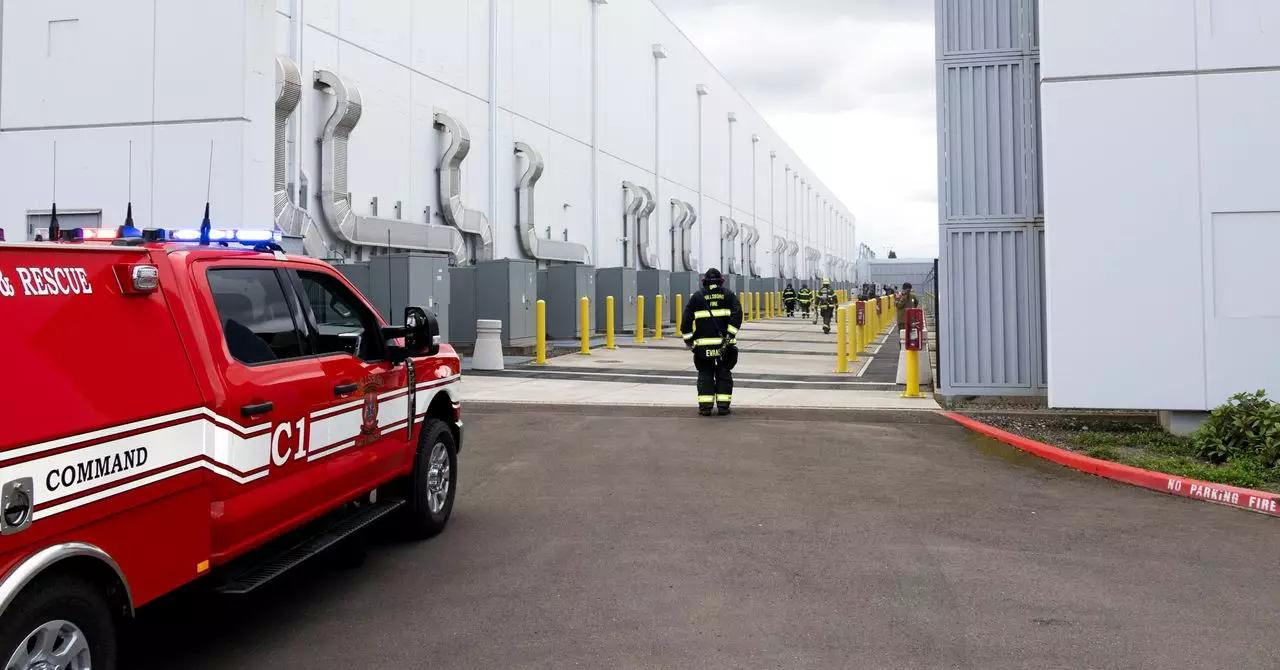In an age where digital infrastructure is the backbone of modern society, the vulnerabilities within these critical systems often go unnoticed until disaster strikes. The recent fire at a data center operated by Digital Realty for Elon Musk’s X platform underscores an alarming reality: our increasingly complex and power-hungry data centers are becoming more susceptible to catastrophic failures. While fires in such facilities are rare, their potential consequences—ranging from data loss to significant economic impacts—necessitate a deeper understanding of their causes and the systemic issues that underpin them. The incident is not just a localized tragedy but a mirror reflecting the mounting pressures on data centers worldwide as demands for artificial intelligence and high-performance computing escalate.
Electrical Failures as a Silent Threat
The crux of the Hillsboro blaze appears rooted in electrical or mechanical failures within a critical power supply component. Specifically, investigators identified the ignition within a Schneider Electric Galaxy VX uninterruptible power supply (UPS), a device designed to provide a seamless power buffer during outages. Although the company confirmed that lithium-ion batteries were not involved, the fire’s origin in the UPS hints at the inherent vulnerabilities of electrical infrastructure in high-density environments. These devices are essential for maintaining uptime, yet their complex electrical systems—comprising large batteries and electronic circuitry—are prone to failure under stress, especially when overwhelmed by the soaring power demands of modern AI workloads. This indicates an urgent need to re-evaluate the robustness of power management systems in data centers, which are often built with redundancy but may lack sufficient resilience against cascading failures.
The Escalating Complexity of Data Center Operations
The expansion of generative AI and advanced computational tasks amplifies the load on data centers, pushing their capacity to the brink. As industries and technology companies chase faster, more sophisticated AI models, the infrastructure must evolve—yet the risk of overheating and electrical malfunctions escalates unabated. Power systems, once capable of handling predictable loads, are now stretched thin, especially during peak operations or unexpected surges. The Hillsboro incident, with its estimated $260,000 in damages, exemplifies how a single malfunction can ripple through an entire facility, leading to equipment destruction and potential data breaches. This scenario exposes a broader systemic oversight: in our race for innovation, we often neglect the foundational safety and maintenance protocols essential to safeguarding these technological giants.
Lessons and the Path Forward
What can this incident teach us about our reliance on digital infrastructure? First, it highlights the critical importance of rigorous fault detection and proactive maintenance protocols. The fire investigation pointed to possible electrical or mechanical shortcomings, emphasizing that even well-designed UPS systems require continuous monitoring for signs of wear or failure. Second, the incident underscores the necessity for resilient cooling and temperature management strategies. An overheated power cabinet is a ticking time bomb; without proper ventilation and real-time thermal diagnostics, fires can ignite with devastating speed and certainty.
Furthermore, this event demands a strategic rethink of data center design—fromcomponent selection to emergency response planning. Incorporating advanced fire detection systems, improving electrical component quality, and fostering transparency with stakeholders about risks are vital steps. I believe that data centers, much like other critical infrastructure, deserve to be at the forefront of innovation—not just in computational power but in resilience and safety measures. As AI continues to evolve and demands grow insatiably, our response must be equally adaptive and preventative.
The Hillsboro fire serves as a wake-up call—an urgent reminder that behind every byte of data lies a complex web of physical and electrical infrastructure that must be protected fiercely. Without a paradigm shift in how we manage, monitor, and reinforce these vital systems, future disasters are not a question of if but when. It’s time to prioritize safety with the same fervor as technological advancement, ensuring that our digital future is built on a foundation as stable and resilient as the innovations it aims to support.


Leave a Reply